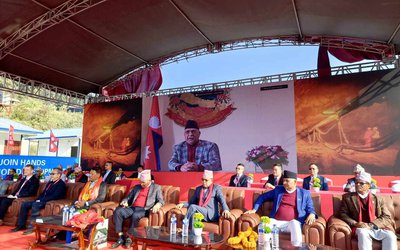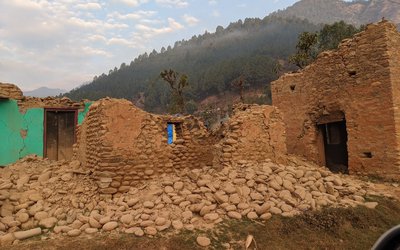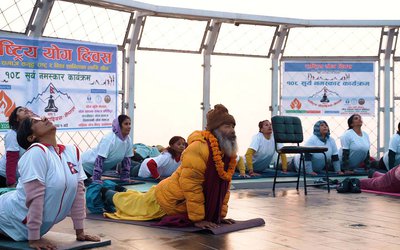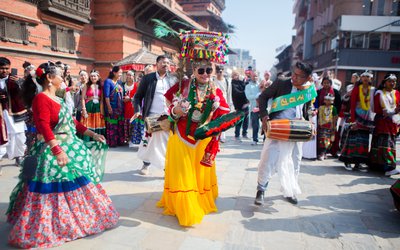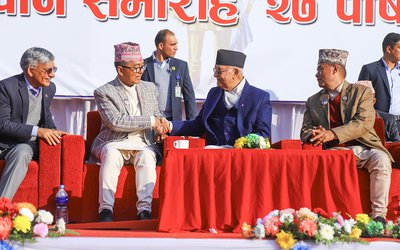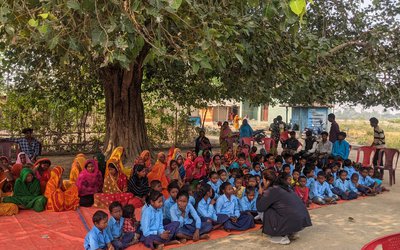
Ambassador Randy W. Berry, Minister for Culture, Tourism, and Civil Aviation Yogesh Bhattarai, and Director-General of the Department of Archeology Damodar Gautam celebrated the recently restored Char Narayan Temple. T
The 16th century Temple, one of the finest expressions of Newari architecture, collapsed from the 2015 earthquakes and required a complete restoration. Because the project utilized salvaged materials, while also incorporating international earthquake-resistant conservation norms, it is a model for future restoration projects.

The United States Embassy, through the Ambassadors Fund for Cultural Preservation (AFCP), contributed $100,000 for the seismic strengthening and comprehensive restoration of the Malla-era Char Narayan Temple in Patan Durbar Square. The project, implemented by Kathmandu Valley Preservation Trust (KVPT), was also supported by the World Monument Fund (WMF), the Japanese Embassy, the German Embassy, and the South Asia Institute – Heidelberg.

“Our work through the AFCP serves as a symbol of the strong and vibrant partnership between our nations,” said Ambassador Berry. “As we celebrate ‘Visit Nepal 2020,’ my hope today is that a fully restored Char Narayan Temple is seen as another testament to our commitment to a prosperous Nepal.”
According to a press release issued by the U.S. Embassy in Nepal, the Ambassadors Fund for Cultural Preservation is the only U.S. government program that provides direct support for the preservation of cultural heritage in developing countries. Since 2003 AFCP has supported twenty-four projects and contributed $3.52 million in Nepal. AFCP has supported other projects in Patan, including the restoration of the Palace, Mul Chowk, Sundari Chowk, and 17th-century water architectures.
- International Day of Commemoration in Memory of the Victims of the Holocaust Marked in Kathmandu
- Jan 28, 2025
- USAID Nepal halts aid for four projects
- Jan 28, 2025
- Weather Forecast: Partly Cloudy In Kathmandu And Morning Fogs In Biratngagar, Bhairwa And Dhangadhi, Simara
- Jan 28, 2025
- TARA (Nepal)-PHDCCI (India) Organised Leadership Development Program on “Global Transition In Leadership” At New Delhi
- Jan 27, 2025
- Business And Revenue Both will increase In Business Friendly Environment: President Dhakal
- Jan 27, 2025

